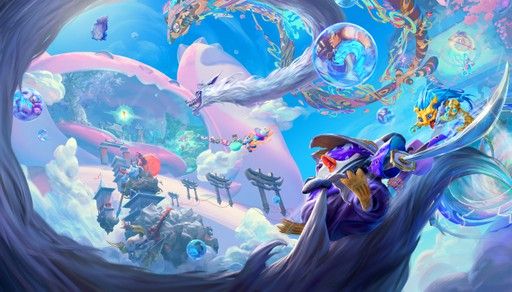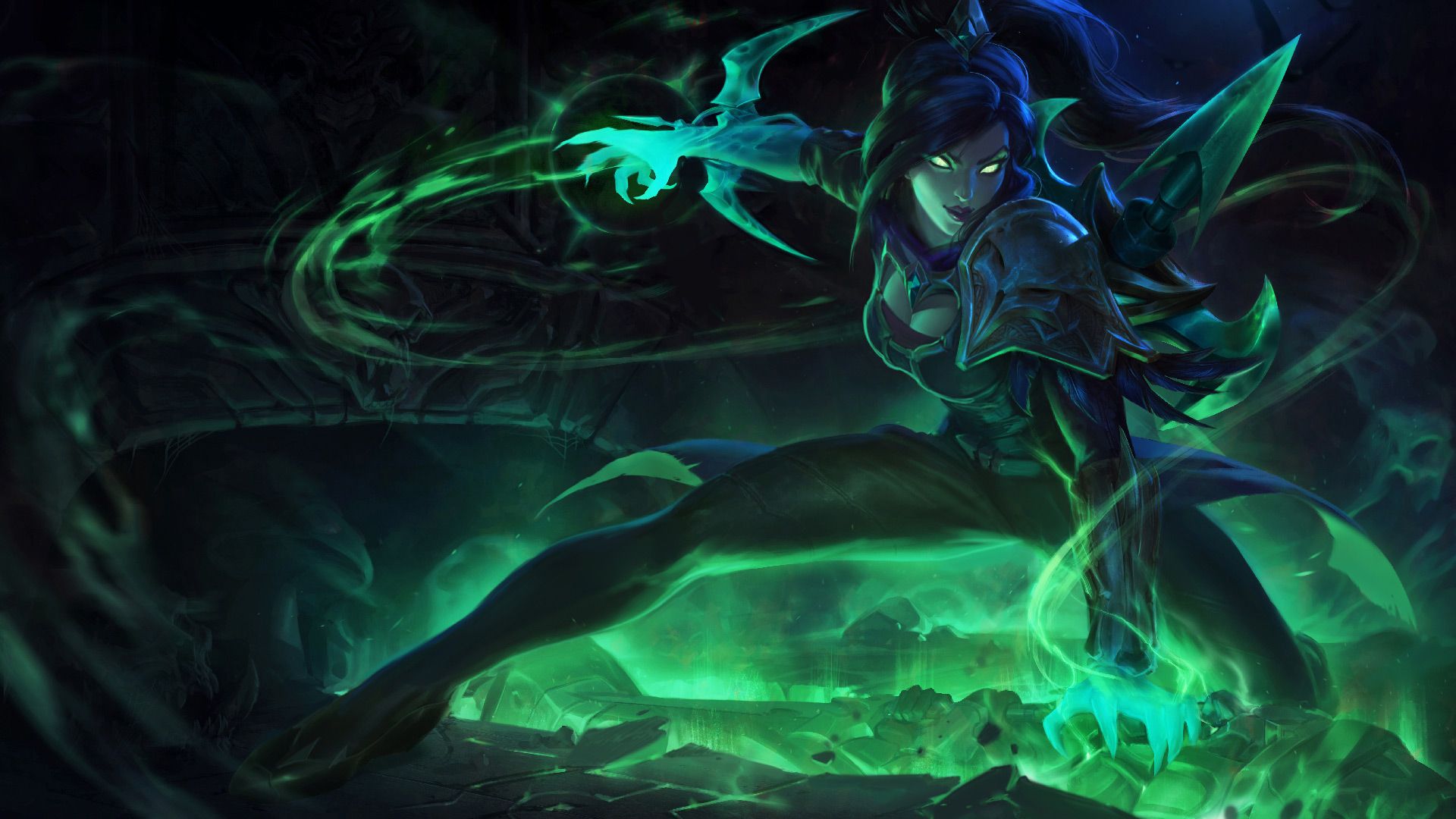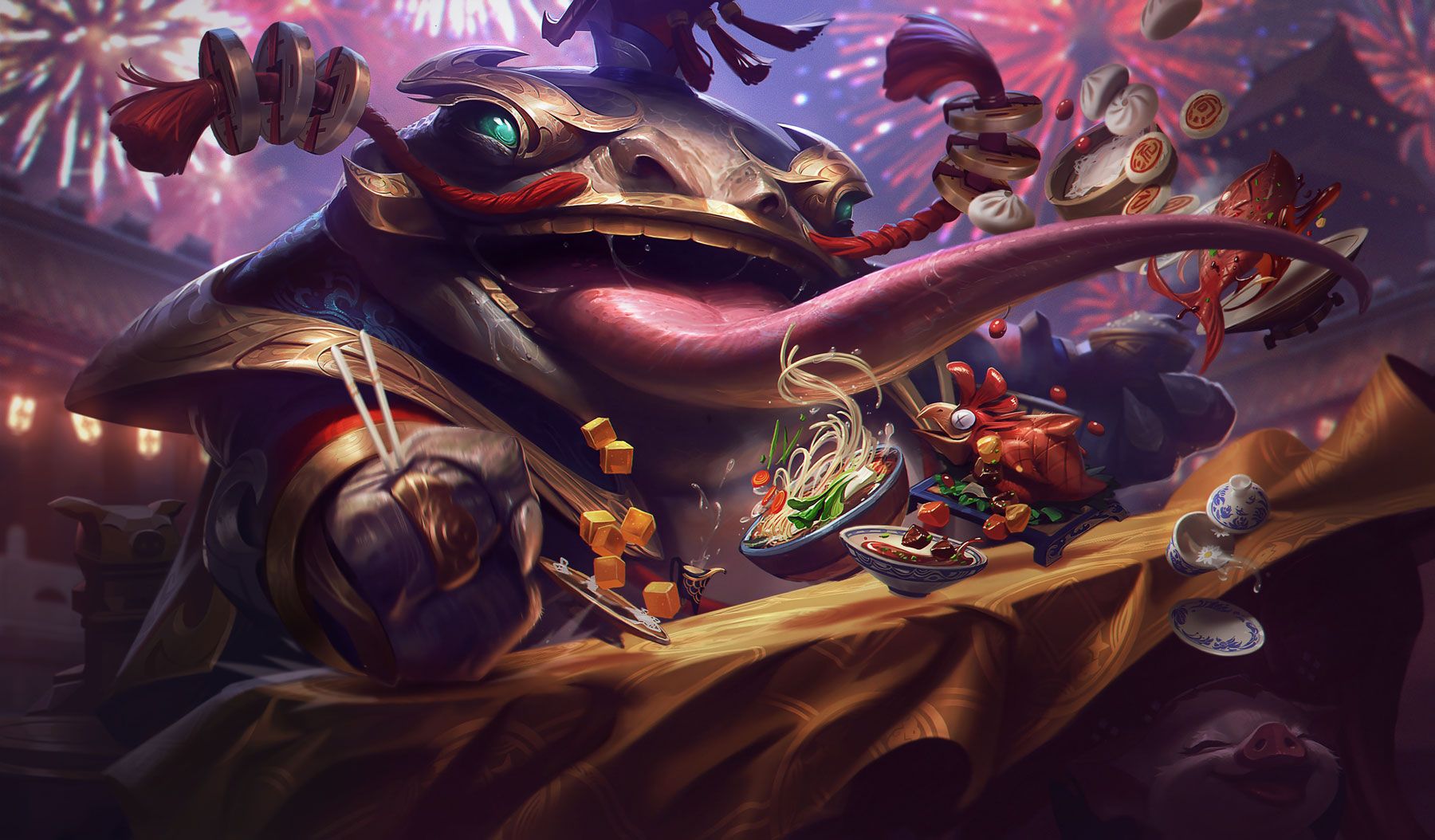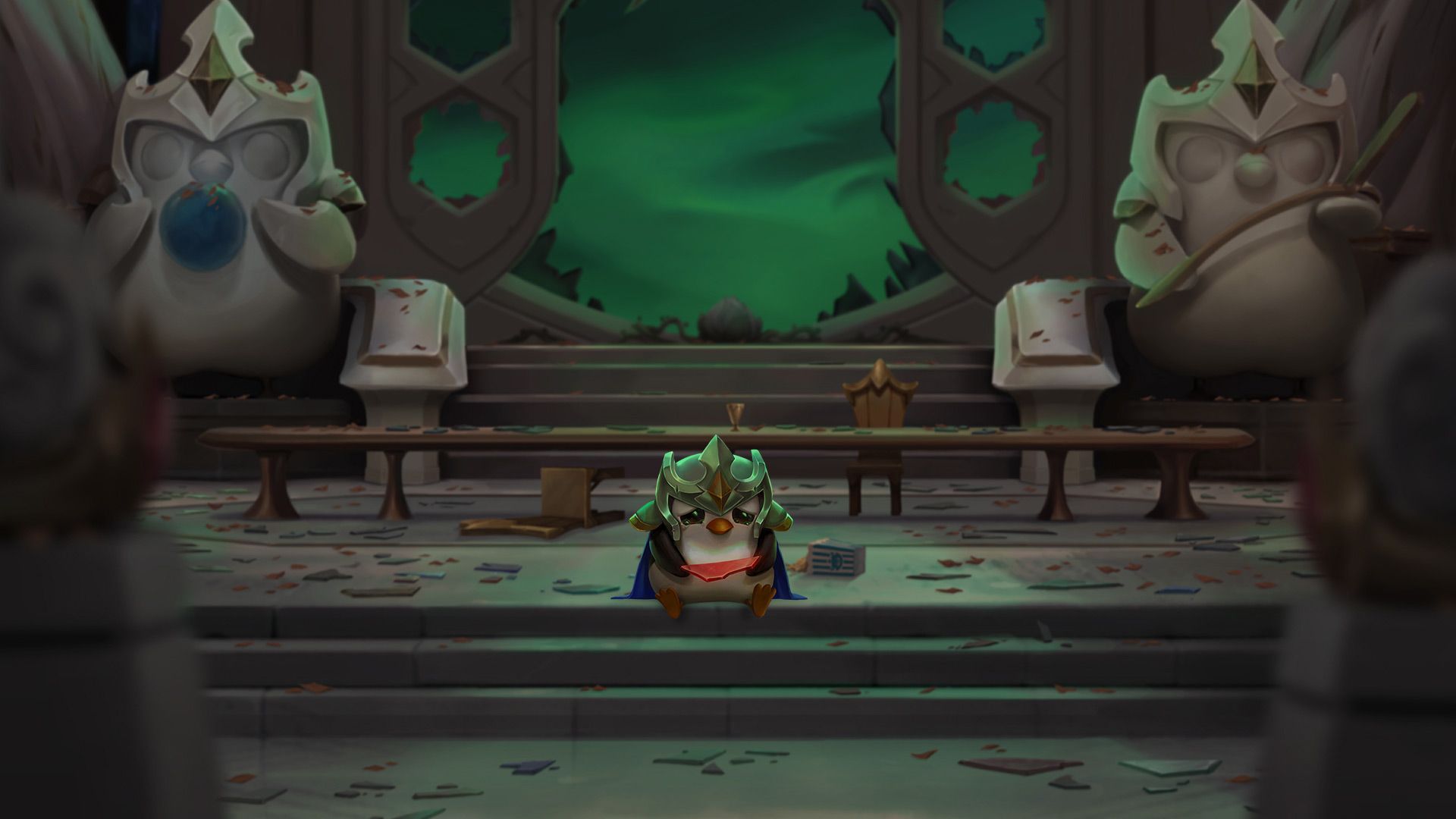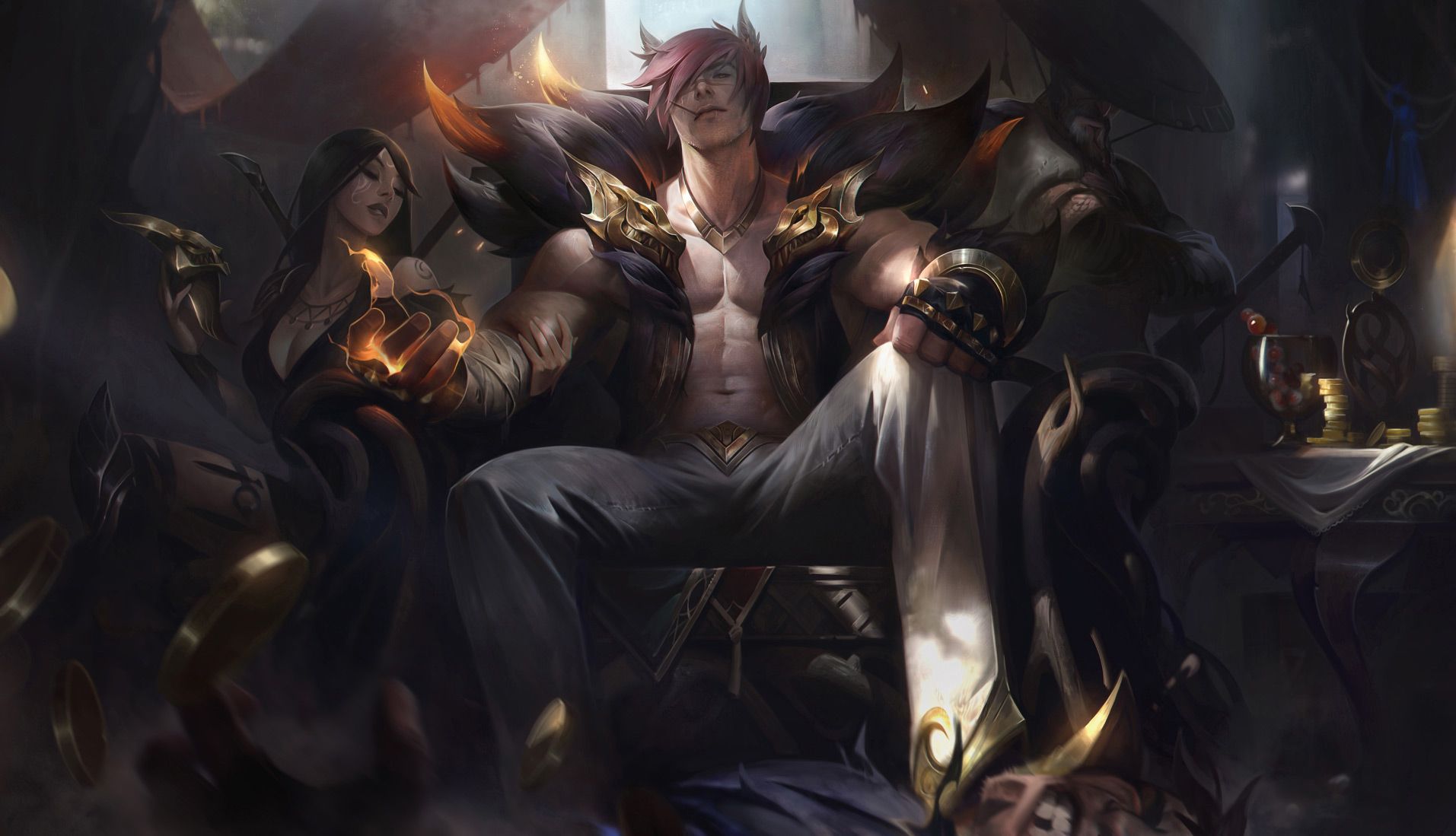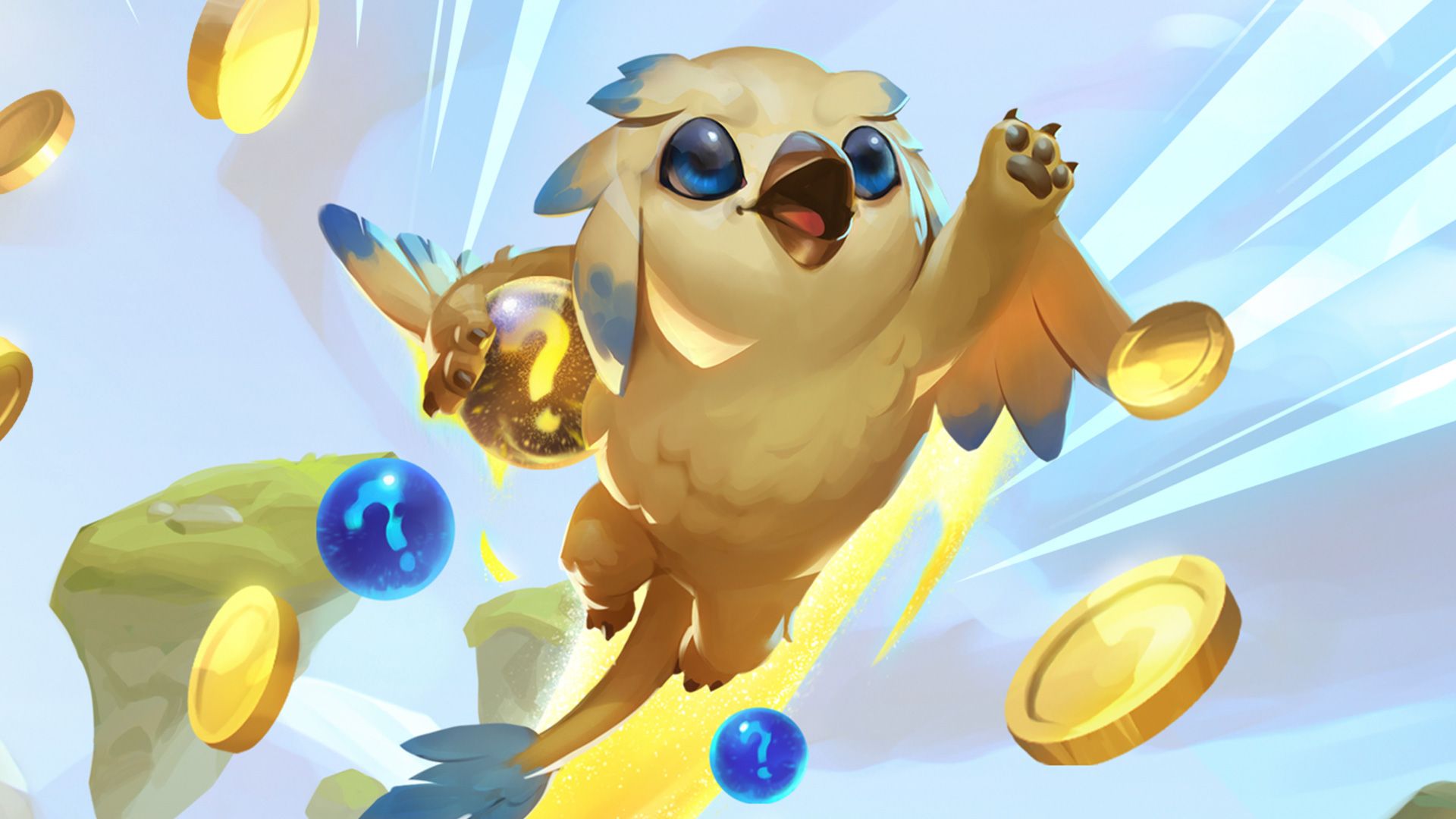/Dev Teamfight Tactics: Reckoning Learnings
Can you believe TFT is over 2 years old? As we approach the conclusion of Reckoning, it’s time for the traditional Learnings article where we look back on what we promised and delivered during Reckoning,and then talk about what we are improving on in the future with Gizmos & Gadgets!
TL;DR
In a rush to climb the ranked ladder, check out major beats below.
Looking Back
- Set Mechanics: The set mechanic for Fates created a lot of game to game variance, but sacrificed player agency. For Reckoning we created a mechanic that was on the opposite extreme. Overall, we will continue to create set mechanics that provide more player agency to increase skill expression, but will do so without losing game to game variance. The set mechanic of Gizmos & Gadgets is an exact result of this.
- Mid-Set Expansions: Mid-set expansions need to be about supporting the players who are still around by bringing meaningful changes to the game. Reckoning’s mid-set was supposed to bring more new champions but pivots were required after problems with early iterations of champions alongside the need to make Radiant Items into a mechanic that could support the loss of Shadow Items.
- Power of Champs Relative to Cost: Fates struggled with balancing champions relative to their cost, and the first half of Reckoning did too. Thankfully we corrected a lot of this in Dawn of Heroes, but the reality is we need to improve our ability to deliver champs with power and fantasies proportionate to their cost at the beginning of the set, so we don’t have to course-correct later on.
- Fortune & Economy Traits: Fortune was really fun, and Draconic did not live up to the bar Fortune set with its daring payouts. So we’re focusing on the fun of economic traits, making sure they are exciting when you play them correctly. Expect lots of dice, treasure, and insane comebacks in Gizmos & Gadgets.
Looking Forward
- Mechanic Complexity: We learned a lot from Reckoning’s set mechanics. Set mechanics need to add a layer of excitement and fun to the core experience without overburdening players with complexity, and without losing the spirit of existing core mechanics. But don’t worry—this doesn’t mean future mechanics will be simple and small, cause Hextech Augments are far from small. But unlike Shadow items, Augments don’t make the core experience of the game more complex.
- Balance Thrashing: Balance thrashing is the nerfing of an S-tier comp to an unplayable F-tier comp. It happened a lot in the first half of Reckoning and it’s something we must avoid. To avoid it in the future we will be balancing with much lighter touches, nudges, bumps—you get it. This may mean it takes a bit longer to get things in the perfect spot, but this is a necessary burden to avoid thrashing.
- Unique Traits: Reckoning suffered from having traits that lacked unique appeal. There was nothing like Shapeshifter or Mage to create unique high moments. So moving forward expect us to put a larger focus on making sure more of the traits provide unique and transformative experiences you haven’t had in TFT before.
- 5-cost Excitement: Reckoning’s 5-costs left players feeling underwhelmed with mostly utility based 5-costs. In the future we’d like to replicate what the Fates mid-set, Festival of Beasts, brought, with five big carry 5-costs in addition to three unique utility champions. Expect us to keep a framework similar to Festival of Beasts for 5-cost design which kept Fates exciting and fresh as we move forward to future sets.
- The Ranked Climb: There are some frustrating elements with the Ranked climb, but there is no easy solution. That being said, expect us to continue improving the Ranked climb experience set after set, starting with Gizmos & Gadgets where once you reach a new rank (Bronze/Silver/Gold/Platinum/Diamond/Masters) you will NEVER be able to demote from that rank for that half of the set.
- Hyper Roll: Even with some criticisms, Hyper Roll found an audience of passionate players. So we're going to keep Hyper Roll available for at least another set, and make some adjustments to continually improve the lab.
Looking Back
To start off with, let’s take a look at the last learnings article and see how it went.
Set Mechanics
Coming off of Fates and Galaxies, we wanted to explore set mechanics that weren’t as “out of your control” and would instead add player agency. For that reason we introduced the Armory system, Shadow items, and eventually Radiant items. These systems provided a ton of agency—you got to choose which components you wanted from the Armory, and that choice helped determine your final outcome in the game. After all, TFT is a series of choices, and the most skilled players can make the right choices at the right time. However, this mechanic came with its fair share of drawbacks. The Armory made fewer items available during PvE rounds, making PvE rounds feel less satisfying. The Shadow item system (which we will get into later in detail) allowed you to completely opt out of it, and having a core set mechanic that’s worth opting out of isn’t really a great sign. Finally, increasing player agency led to a decrease in game to game variation compared to something like the Chosen mechanic. Overall, though, we saw the pros outweigh the cons and will continue providing player agency to increase skill expression, without sacrificing game to game variance. This is what we’ll be aiming for with the Hextech Augment system in Gizmos & Gadgets.
Mid-set Expansion
Fates was the largest mid-set expansion we had ever done, and we learned a lot from it. With Reckoning we said we were going to alter the set mechanic, swap out major carries, and add more new champions in addition to some returning favorites. The reality is that we didn’t fully hit our goal. Instead, we learned a ton about what a mid-set expansion should be. We ended up adding fewer champions than the Fates mid-set so we could focus on new champions instead of reprints. Sadly, some of our first iterations of new champions (such as a 4-cost Sentinel Graves that never shipped) weren’t hitting the mark, which required us to pivot back into reprints like Lucian. In addition, Shadow items and the first half of Reckoning posed a challenge for us and our players—more on that later. This led us to pivot VERY heavily to adjust the mechanic in a way that would bring back lapsed players. We always had the intention of adding something like Radiant items into the game, but we had to make quick, large-scale pivots to bring the system up to a quality that could support the removal of Shadow items. Thankfully, we did have some big hits with the Radiant Blessing (AKA the Stimmy) and the Tome of Traits, both of which quickly became fan favorites. The experience taught us that mid-set expansions need to be about supporting the players who are still around and giving them what they want. In the future you can expect that mid-sets will aim to increase existing player satisfaction, bringing meaningful change to the game so they can keep enjoying the set.
Power of Champs Relative to Cost
Fates struggled to balance champ power relative to cost, so with Reckoning we committed to improving our balance framework and promoting many viable play patterns. We ran into a lot of challenges with this, especially in the first half of the set. We came up with a balance framework, but quickly learned that TFT balance can shift on a dime, and that a balance framework like League of Legends’ only tells you what the meta IS, not what the meta can be. No patch said this better than patch 11.9 into 11.10. Every metric we had showed Vayne was ridiculously bad and in need of massive buffs. But right as we locked patch 11.10, a new build was discovered using Shadow Zeke’s to amp up Vayne’s attack speed. She quickly shot up from F-tier to S+ tier, forcing us to quickly nerf Vayne a large amount.
In addition, we struggled to establish healthy identities with certain champions compared to their cost structure. LeBlanc was a terror that honestly ruined the first half of Reckoning for a lot of players. A 2-cost being the strongest Assassin carry with high DPS and CC made little sense. Trundle and Ryze suffered in this area as well, feeling extremely unfun to fight against due to their lack of counterplay, less visible power, and high shutdown potential. On the opposite end of the spectrum, we had 5-costs that were supposed to feel epic and exciting, but instead felt extremely narrow and only worked in the right conditions. Kayle was limited to a single frustrating Knights comp, Darius needed extremely specific items and comps to be just okay, and Teemo wasn’t worth the health cost the first half of the set. Thankfully we corrected a lot of this in Dawn of Heroes, but the reality is we need to improve our ability to deliver champs with power and fantasies proportionate to their cost at the beginning of the set, so we don’t have to course-correct later on.
Fortune & Economy Traits
Coming off the back of Pirate and Space Pirate, Fortune was one of the most hype traits of all time, and we committed to continue exploring these types of economic traits more in Reckoning. Draconic was our attempt at this, allowing players to get eggs to hatch even more champs. But the reality is that it was a pretty big step back in excitement from Fortune—especially during the first half of Reckoning, where it was impossible to get 5 Draconic without hitting some insane Level 7 Heimerdinger. In addition, Draconic didn’t really feel like an economic trait in the classic sense, since the temptation to hoard all the champs and 3-star them was more appealing than just selling Ashe and Sett over and over. It wasn’t an issue of power, as people who hit 3 Draconic at 2-1 could certainly win games… but that’s not what most players want out of these traits. They want high moments of daring excitement where you take a risk, make the right play, and get a big pay off. And while 4 and 5-turn golden eggs hit that bar, they were just too rare. So we’re going back to basics here and focusing on the fun of economic traits, making sure they are both accessible and exciting when you play them correctly. Expect lots of dice, treasure, and insane comebacks in Gizmos & Gadgets.
Looking Forward
Now let’s talk about the key learnings from Reckoning—and there were a lot of them.
Mechanic Complexity
Set mechanics are oftentimes what players remember the most from set to set, so as we approach Gizmos & Gadgets we are taking many learnings when it comes to Reckoning’s complex set mechanic. Even at its most basic, TFT is a complex game. You have economy, board strength, army building, positioning, itemization, tempo, odds control, and on and on. And that’s fine! It’s what TFT fans and strategy players enjoy. However, with all these moving parts, adding more complexity on top can get pretty dangerous, especially when you’re adding that complexity to what is already the most difficult system to understand. Champion itemization is already the most difficult part of TFT, and adding Shadow items as the set mechanic took the complexity of this system even further. While there are players out there that enjoy difficult decision making, the added complexity of this system was not widely satisfying. What MOST players want is to build an army and then bash that army into another… tactically. Shadow items broke that fantasy because it took what was supposed to be a high moment (getting more items) and turned it into a problem to solve. Choosing incorrectly meant your champs would do terrible things like self-destruct, or have their spell stop functioning, and then they’d just lose the game. We heard players loud and clear that this just wasn’t the type of fun that most of you want. So we listened and quickly pivoted to Radiant items, which were much easier to appreciate and always provided a positive experience. We also added Radiant Blessings and Tome of Traits, which both led to more high moments than before. It was immediately clear that this was a more fun direction, and much more accessible. So moving forward, we’re going to make sure that set mechanics add a layer of excitement and fun to the core experience without overburdening players with complexity, and without losing the spirit of existing core mechanics. It really can’t be understated how important an exciting and fun mechanic is to a set, so this learning is key moving forward. But don’t worry—this doesn’t mean future mechanics will be simple and small. Hextech Augments are actually quite a large system with TONS of unique opportunities. But unlike Shadow items, Augments don’t make the core experience of the game more complex.
Balance Thrash
This is a big one. TFT has thrived up to this point by being quick and precise in attempting to balance the game and maximize playable comps. This often results in the start of a set being pretty rough. Players discover a new comp or item build that’s too powerful, and then we have to bring it back to a balanced state. By the second half of a set, we’re usually in a pretty good spot. Sure, sometimes a champ or trait rework throws it all out of whack and we do the balance dance again. But that’s all part of what it means to balance a game. What WASN’T okay, and what we must avoid in the future, was the amount of “balance thrash” that took place in the first half of the set. A comp would be discovered as very powerful (for example, 6 Skirmishers in patch 11.10) and many players would learn how to play it—who to itemize, how to position, what the bad matchups are—and they’d get really good at that comp. Inevitably, the comp would get nerfed. Which is fine, especially when a comp needs it. The problem is, we would nerf it SO HARD that it went from S-tier to F-tier. All of a sudden, all the time you spent learning the thrashed comp went to waste. You may have even been forced to abandon a comp that was your favorite. This caused a lot of player pain, and we needed to do better. So for the Dawn of Heroes mid-set, we committed to balancing in ways that didn’t cause thrash... and we were MOSTLY successful. Some nerfs landed perfectly because we would space them out over two to three patches, and the same goes for buffs. However, we weren’t perfect (Tristana in patch 11.16b was an overnerf that hit the comp too hard) and there’s still room to improve. It’s clear to us that rolling out balance changes slowly is much more palatable, so moving forward you can expect us to continue to balance through much lighter touches to avoid balance thrash, even if it means it takes a bit longer to get things in the perfect spot. If you’ve been playing in Dawn of Heroes, the balance framework for Gizmos & Gadgets will look very similar, but likely even lighter when big cases come up.
Unique Traits
One of the most important things when developing a set is to come up with a wide variety of trait types. This allows for a much wider range of playstyles and combat scenarios, and overall makes a set more appealing to play and experiment with. There will always be your classic and easy-to-learn, stat based traits (Vanguard, Brawler, Ranger, etc) that act as power anchors for the more complex traits. But there should also be unique traits that make you curious to try out their potential. Reckoning didn’t quite hit the mark here, relying a lot on giving out stats in unique ways, but not so much on the unique fantasies. Dawnbringer and Nightbringer, the two core vertical traits to the set, gave you more health and damage...but so did Skirmisher and Redeemed. So many big verticals were just stat buffs. And even our more unique outputs (like Hellions who spawned clones, and Cavalier who charged into battle) were still mostly appreciated for the stat half of the trait (attack speed and damage reduction, respectively). Even Coven, which added a whole new positioning element, became a simple question of “which champ gets more damage?” The bottom line is, none of the traits felt truly transformative to the player experience. So moving forward, expect us to focus on making traits that provide unique and transformative experiences you haven’t had in TFT before.
5-Cost Excitement
5-cost champs are a key part of any set that players get excited about. They allow us to create transformative moments that are just flat-out cool—whether it was Zed making infinite clones of himself, Gangplank exploding an entire team and making 4 items pop out, or Kayn jumping to the backline and instantly deleting your opponent’s hopes. Everyone has their favorites, and that’s what’s important. Reckoning’s first half didn’t create many favorite 5-costs, since Darius, Garen, Volibear, Viego, and Kindred were more utility champions than exciting carries. And while Kayle could carry, she was only viable in one comp and wouldn’t pop off until 20 seconds into a fight. This left only Teemo and Heimerdinger as the true carries. Even bringing in Akshan during Dawn of Heroes wasn’t enough to fill the exciting carry gap. Comparing the 5-costs of Reckoning to those of previous sets, we came to the conclusion that a set containing eight 5-cost champions should include around five REALLY exciting carries to deliver an exciting end game fantasy, and the remaining 5-costs should provide interesting utility. Festival of Beasts provided a great example of this, with its five unique carries (Swain, Samira, Sett, Yone, Lee Sin) and three unique utility champs (Ornn with his Artifacts, Zilean with his revive, and Azir with his soldiers). With that in mind, expect us to keep this framework for 5-cost design moving forward for future sets, keeping exciting end game fantasies as a core part of each set.
The Ranked Climb
TFT started off using basically the same Ranked system as League of Legends because, well, it works for League and it made sense for how quickly the game was developed. But as time has gone on, we’ve realized our needs are a bit different than League of Legends’. We saw a lot of players work hard to reach a new rank, then stop playing for fear of losing it. That’s not really a good experience. We began to experiment with Hyper Roll’s Ranked system, where once you reached a certain rank, you could never lose it—and saw good success with it. To start, we’re going to be applying the same thing to TFT’s core Ranked experience. Next set, once you reach a new rank (Bronze/Silver/Gold/Platinum/Diamond/Masters) you will NEVER be able to demote from that rank for that half of the set. We’ll still do Ranked resets each set and mid-set like we’ve been doing. This change will lead to inflated ranks, so to compensate we’ll be making it a bit harder to reach each new rank. There are still other improvements we want to make to our Ranked system, as we do see a lot of other pain points. When finishing 1st grants you 40 LP but 8th costs you 80 LP, or when you’re matched up against people one or two divisions higher than you, or when you finally reach Masters and see that Grandmaster is still 500 LP away, it’s frustrating. But while some of the problems are obvious, the solutions are not, and we need to take the time to correct these the right way. There isn’t a fix-all to make the Ranked climb perfect, but expect us to improve the core Ranked climb experience every set from here on out. It’s a lot of people’s primary progression goal, so it needs to be as engaging as possible!
Hyper Roll
Finally, let’s talk about Hyper Roll, TFT’s first lab. On one hand, we succeeded in creating a shorter game, lasting an average of 20 minutes, with a focus on core gameplay: getting champs, building a team, and fighting. However, we didn’t quite hit our goal of creating a mode that’s easier to learn. At certain points in the game, Hyper Roll can be extremely hectic for players. Due to its shorter length, there isn’t really any down time or breathing room. Every turn you have gold to spend, items to place, and pivots to make. Even the first few turns can feel chaotic as you try to establish a direction or even roll for your 3-star 1-costs. Players who really enjoyed the lab and wanted to climb the Hyper Tiers had to deal with people who took advantage of our lax queues to cheat their way to the top (and get their accounts banned in the process). This left the legitimate Hyper Roll fans feeling pretty dissuaded. Despite these criticisms, Hyper Roll found an audience of players and we’re going to keep Hyper Roll available for at least another set, and make some adjustments to deal with these criticisms. Hyper Roll players, rise up and let us know what you think!
That’s it for now. Thanks for playing TFT and giving us your feedback. Learning what you enjoy about the game helps us make TFT the best game it can be! We can’t wait to show you what we’ve done with our learnings in TFT: Gizmo’s & Gadgets. Until then, take it easy!
